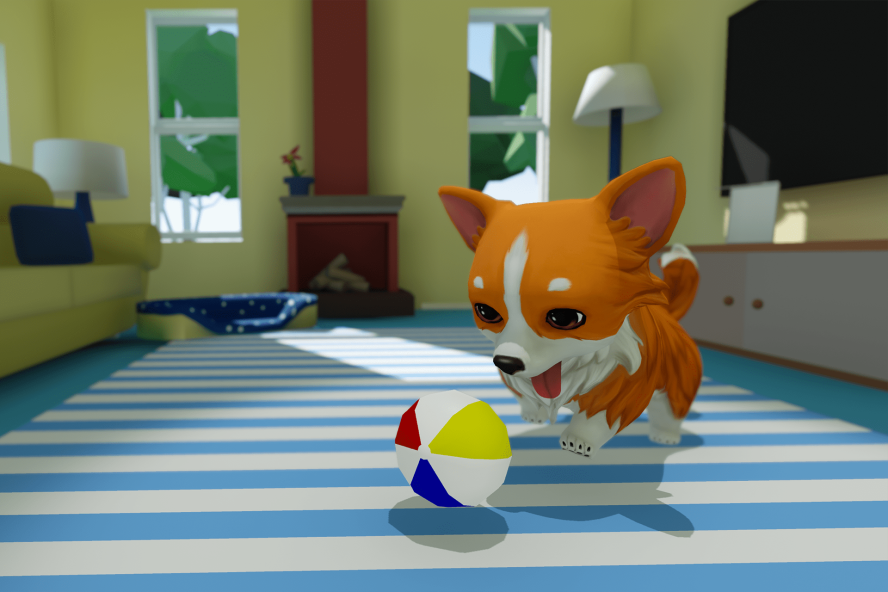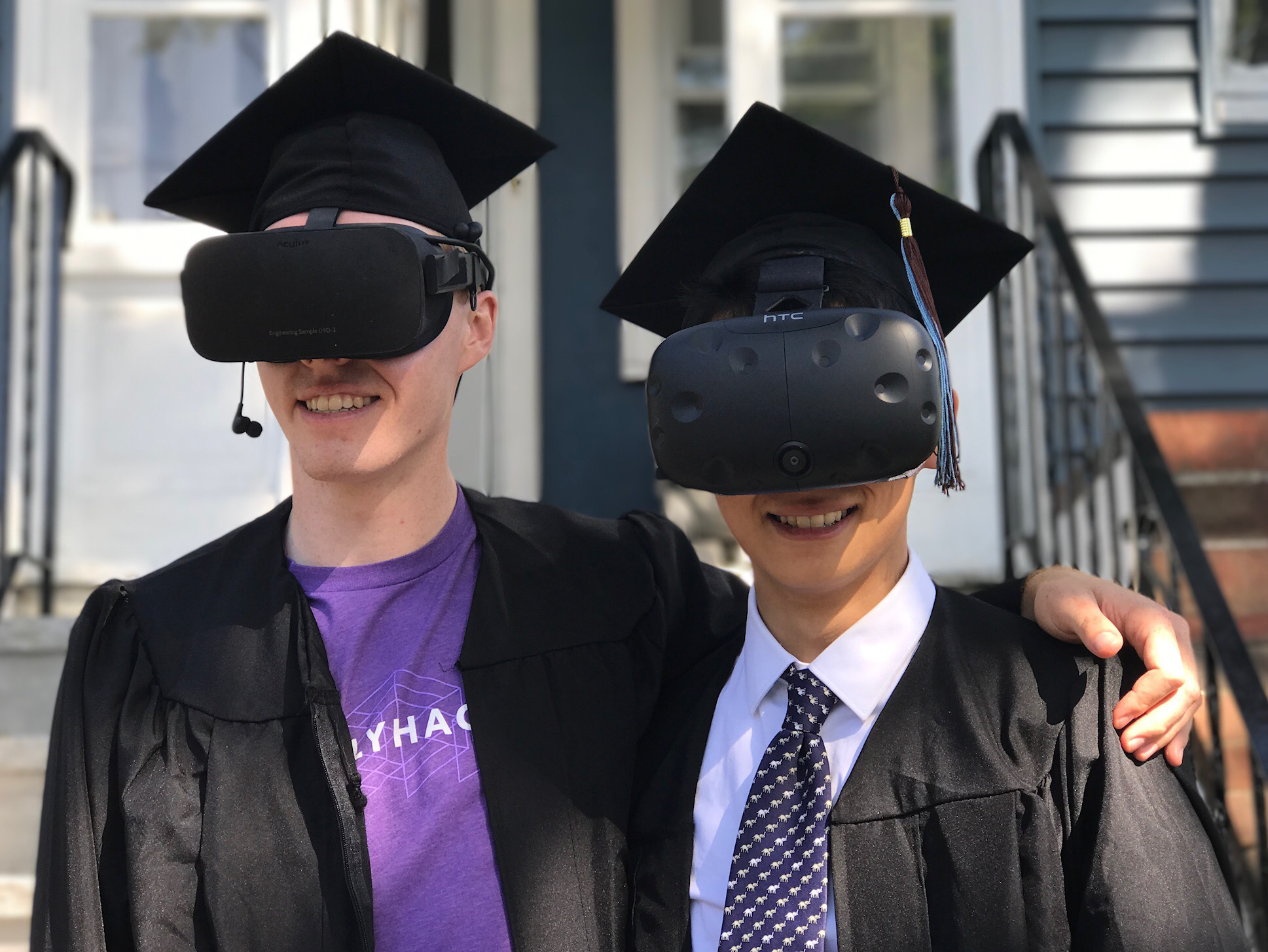Man's virtual best friend

By Kristin Livingston, A05
Sloppy kisses and soft paws. Soulful eyes and an ever-wagging tail. The pros of owning man’s best friend are endless, and, according to the ASPCA, 78 million dogs are currently owned by Americans.
But for many, the dream is impossible: allergies, landlords who don’t accept certain breeds, the high cost of food and care, and busy schedules that don’t allow for walks.
Enter RoVR. The brainchild of Jeremy Slavitz, E17, and Henry Zhou, E17, RoVR (pronounced “rover,” as in the colloquial name for a dog) is the baby of their independent game studio, Ridgeline Labs, and the future of virtual dog ownership. Forget kibble and treats—grab your headset and console.
Revolutionizing VR
When a player walks through the virtual door of RoVR, a corgi is at their feet. A brown and white, fluffy pup, he’s delighted to have his owner home and can’t wait to show his new tricks, play fetch, go for a walk, or even be dressed up in pajamas covered in rocket ships.
“The possibilities are endless,” says Zhou.
The virtual pet market isn’t new (all hail the Tamagotchi), but Zhou and Slavitz are hoping consumers will see RoVR as less of a game and more of a constant companion. Corgi needs love, food, water, and exercise to survive, just like a real pet. His code was originally developed under a different name: Pets VR. Along with Tafari Duncan, E17, Alice Lee, E17, Walton Lee, E17, and Alex Nguyen, E17, Slavitz and Zhou won the Tufts Ideas Competition in 2016 with Pets RV. The duo met during junior year in a graphics class and paired up on several ventures thereafter. After graduation, they took Pets RV to the next level.
“We built this prototype cheaply with basic assets found on the internet, and then we submitted a proposal to MIT Play Labs, a new summer accelerator for playful technology, hosted by MIT Game Labs,” says Zhou.
They got in.
 Slavitz and Zhou wearing VR goggles on graduation day.
Slavitz and Zhou wearing VR goggles on graduation day.With $20,000 in funding now under their belts, the friends incorporated their company and hired freelance artists from around the world to create 3D models of dogs, accessories, and every aspect of the environments users can live in with RoVR. “It’s interdisciplinary work between game design and programming and art,” says Zhou. “It’s really exciting.”
There have been some bugs and barriers, as there always are with startups. “We’ve had some bottlenecks with art creation,” says Zhou. “When you’re making a 3D game, a pipeline has to be followed: before you program, you have to conceptualize, model, and texture the art. Then you have to have it animated (skinning and rigging).” Behavioral programming can’t begin until that’s complete. “Making a game so art dependent, it’s taking a lot of time to get to the interesting programming point.”
RoVR made its public debut in a pre-alpha state in July. That initial user testing has helped Zhou and Slavitz stay strong with their ideas, determination, and strategy.
The Market Leap
Ironically, neither Slavitz nor Zhou owned dogs while growing up. That hasn’t stopped them from trying to carve out the artificial intelligence pet niche for VR. “If our initial release is successful and we start growing, we’d like to have other breeds and animals: cats, dragons, birds,” says Slavitz.
“We envision a world where everyone can have emotionally significant connections in VR with AI entities,” adds Zhou.
Like many tech products ahead of their time—laser discs, computers, even the television—VR has been slow to catch on due to consumer cost, but companies like Microsoft, Facebook, and NASA aren’t slowing down their investments. According to the International Data Corporation, projected revenue for the augmented and virtual reality markets will approach $14 billion in 2017, with a forecast to shatter the market at $143 billion by 2020.
Slavitz and Zhou credit Tufts professors for inspiring them to take the leap into VR, giving them the confidence to talk to investors, and assigning plenty of work. “Although this has been one of the hardest things I’ve ever tried to do, I couldn’t do it without those late nights of writing code for class,” says Zhou. “I have to thank Tufts for teaching me how to power through challenges and not give up.”
Zhou is also grateful for the School of Engineering’s curriculum, which exposes students to the humanities. He says, “I’m a believer that context matters.” Programming and coding aren’t enough. “What makes this work so interesting is what you can do and make with it to make the world a better place.”
Slavitz, who has been working on game development since 2012 and even published his own 3D puzzle game, adds, “RoVR has definitely been difficult, but knowing that that every second of my time is being spent on something I truly believe in makes it feel very much worth it.”
Department:
Computer Science